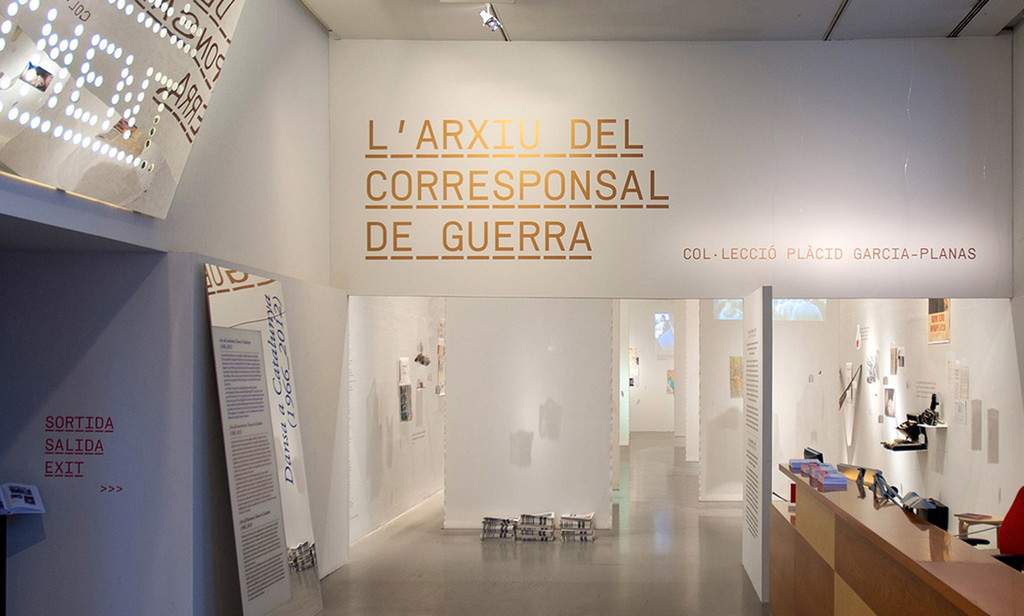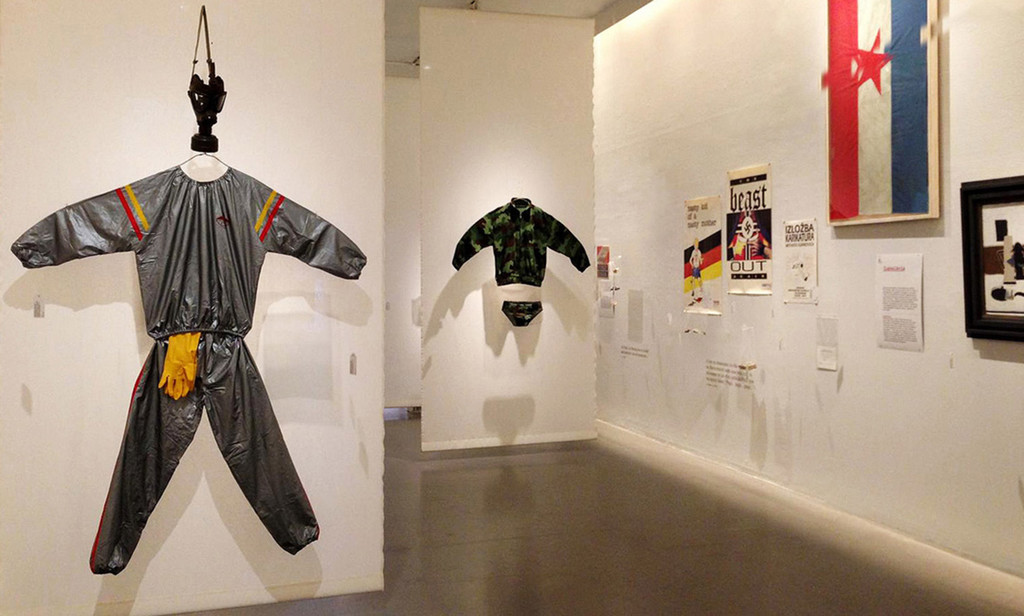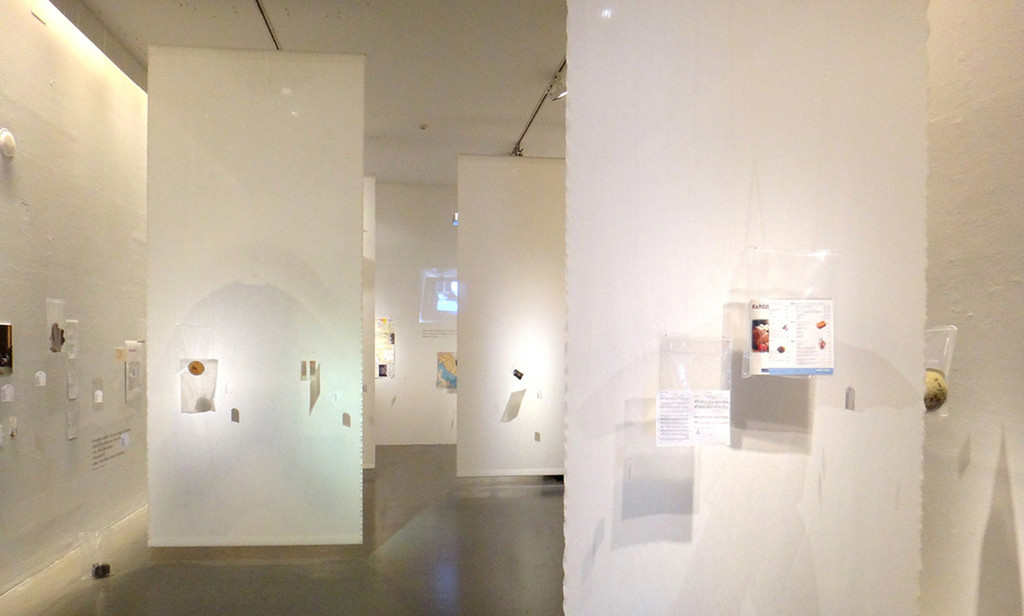
The Catalan journalist, Plàcid García-Planas, presented a collection of objects that invite you to reflect on the world that we live in, which are exhibited in Arts Santa Mónica Barcelona.
"The Archive of the war correspondent" is one of the diverse exhibitions that the Arts Santa Mónica has received. Close to the Atarazanas of Barcelona, inaugurated in 2012 and extended to the 9th of March 2013. Plàcid Garcia-Planas is the Avant-garde war correspondent that is behind all of the objects exhibited. The journalist admits that the calling came from his family: his father, dedicated to the world of textiles, who transmitted his curiosity throughout the world, and the desire to know. Years of experience hang from the ceiling of this room, giving place to the reflection of the visitor. I went in when my belly reminded me that it was time to eat.
An apparently inoffensive plastic duck with a camouflage print and a sweet wrapped in paper that writes "Welcome to hell" are two of the gifts that they offer you in Eurosatori, the largest arms fair in the world. Now, they hang by a thread. "Innocent things are announcing horrible things, " says Plàcid Garcia-Planas himself, in a gentle and soft voice. Small objects that out of context seem to say nothing say a lot, they hide stories. The duckling could be a child's toy and the candy could be savoured slowly by our palate. The taste of bitterness and acidity come off. Now more than ever, the popular expression that "appearances deceive" makes sense.

The 9-11 was one of the most bloody attacks of the 21st century, with more than 3, 000 dead. Sadam Husein was one of the fiercest dictators of our century. The Titanic was the most heard of shipwreck of 20th Century, with more than 1, 500 dead. The tragedies and the Iraqi dictator have one thing in common: thousands of deaths, injuries and missing persons. This chilling figure is trivialized, erased and reduced to absurdity with the twin towers in the shape of a lighter and with an aeroplane that crosses one of them, with a Saddam Hussein-shaped doll against the stress, with an inflatable boat that reminds us of the Titanic.
All of them are hung from the ceiling, leaving them at the height of our view. We can touch them. We can try to light the flame of the lighter but it does not have gas. We can squeeze the small Sudam with all our force but he will return to his original state. We can imagine we have taken the inflatable Titanic to the beach or in the pool but it won't sink. The small footprints of big catastrophes or killings in our history seem intact whilst they hang from a thread and give us all types of sensations. They are the commemoration of the catastrophe.
Just in front, are letters stuck to the wall that say: "The war is, in some way, the place that leaves". Dead wars. The apparent neutrality of the objects, again. Waste picked up from the ground that open the paths to reflect the history of humanity. The Plácido itself admitted to being a lover of returning to the places where there had been war years later. Feeling pleasure in discovering what was left nowadays and following it. This exhibition has also taken a step further: to transmit it to the viewer. And he also gets it. The objects speak to us.
More objects hang from threads. A paper box of chips from McDonalds that we can find in the place where they killed Mussolini. The sticker from a bottle that represents the remains of a "botellón" (illegal street party) that took place in 2001 in the mausoleum where they rested the remains of Gavrilo Princip, who produced the First World War triggering attack. Scores from a song that was played in 2007 in the office where Hitler signed the Munich Agreement in 1938. The menu of a restaurant called Mickey, located where there was the villa-mirador of the same German dictator.

Again, a similar sensation. Objects that seem innocent hide terrible history from us. It is paradoxical that the most widespread fast food chain of the contemporary world occupies the exact space in which they primed Mussolini. Today, minced meat is sold where almost seventy years ago civil society stung the flesh of the dictator. It is paradoxical that there, where they formally approved the invasive plans of Hitler, has today been converted into the Superior School of Music and it sings a pop song. It is paradoxical that where Hitler had a chalet and rested, there is now a restaurant where it offers a menu for the smallest people, with the name of one of the characters of animated drawings that moves us most. It is paradoxical. Paradoxical and worrying is the human capacity to erase all traces of the past and to play down the history, with our history and our world.
With a very expressive quote, written on a wall that can only be seen when leaving the room, the journalist concludes his presentation: "How to adverb suffering, how to adjective darkness, how to punctuate death".
It is fair to recognize the merit of Plàcid Garcia-Planas. Through his simple collection he describes reality. Without using too many words, just attaching a short label to each object. Objects that are collected from the ground and that we can qualify as waste (Garcia-Planas himself admits it) invite us to reflect. Matter is claimed to break with the apparent neutrality. Apparent because it is hiding a history of humanity that the war correspondent has been able to awaken and transmit. These objects, which can be read are, in the words of the same correspondent, chronicles in three dimensions.

 What to see Barcelona,
Barcelona,
Spain
What to see Barcelona,
Barcelona,
Spain






















